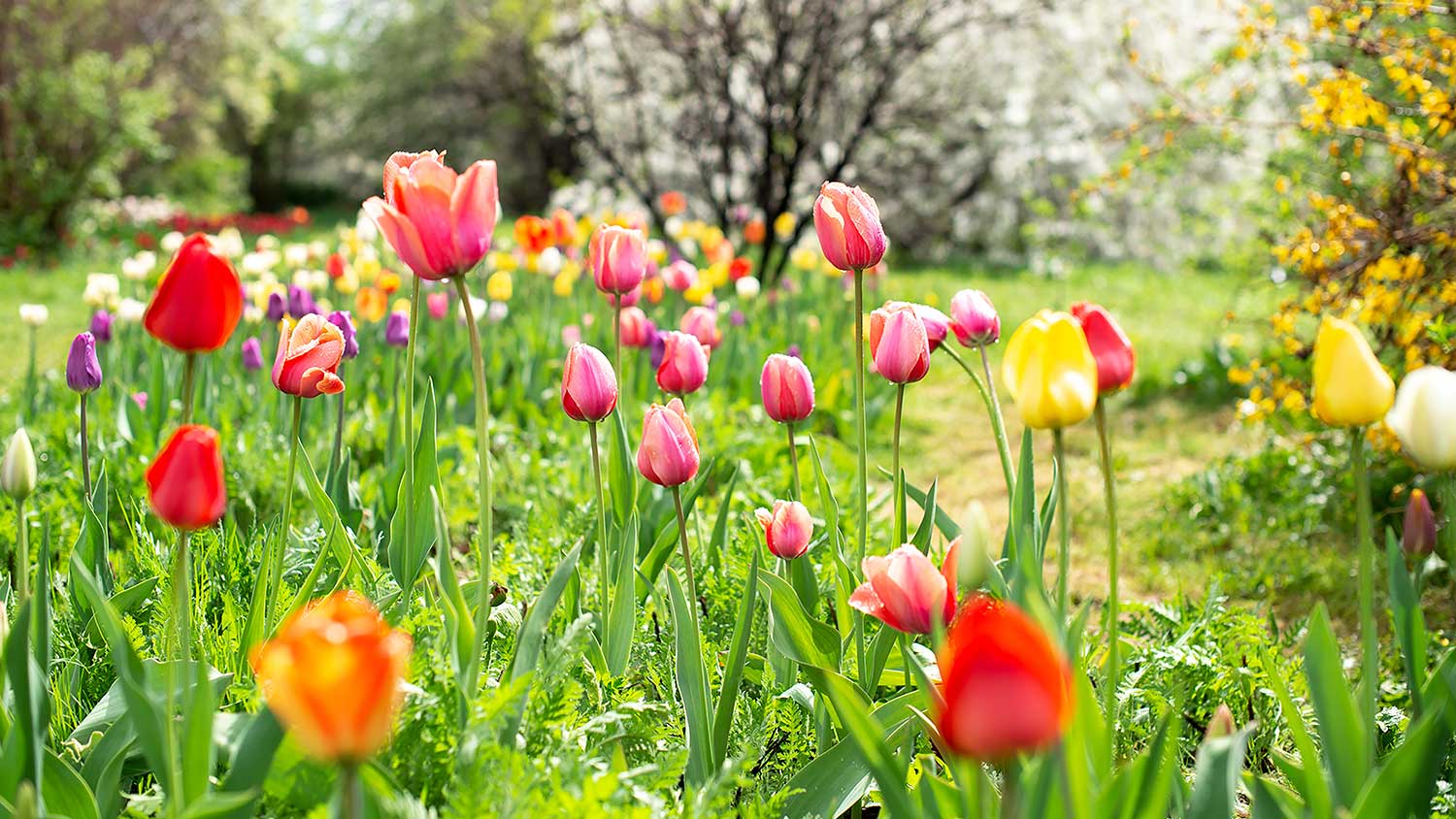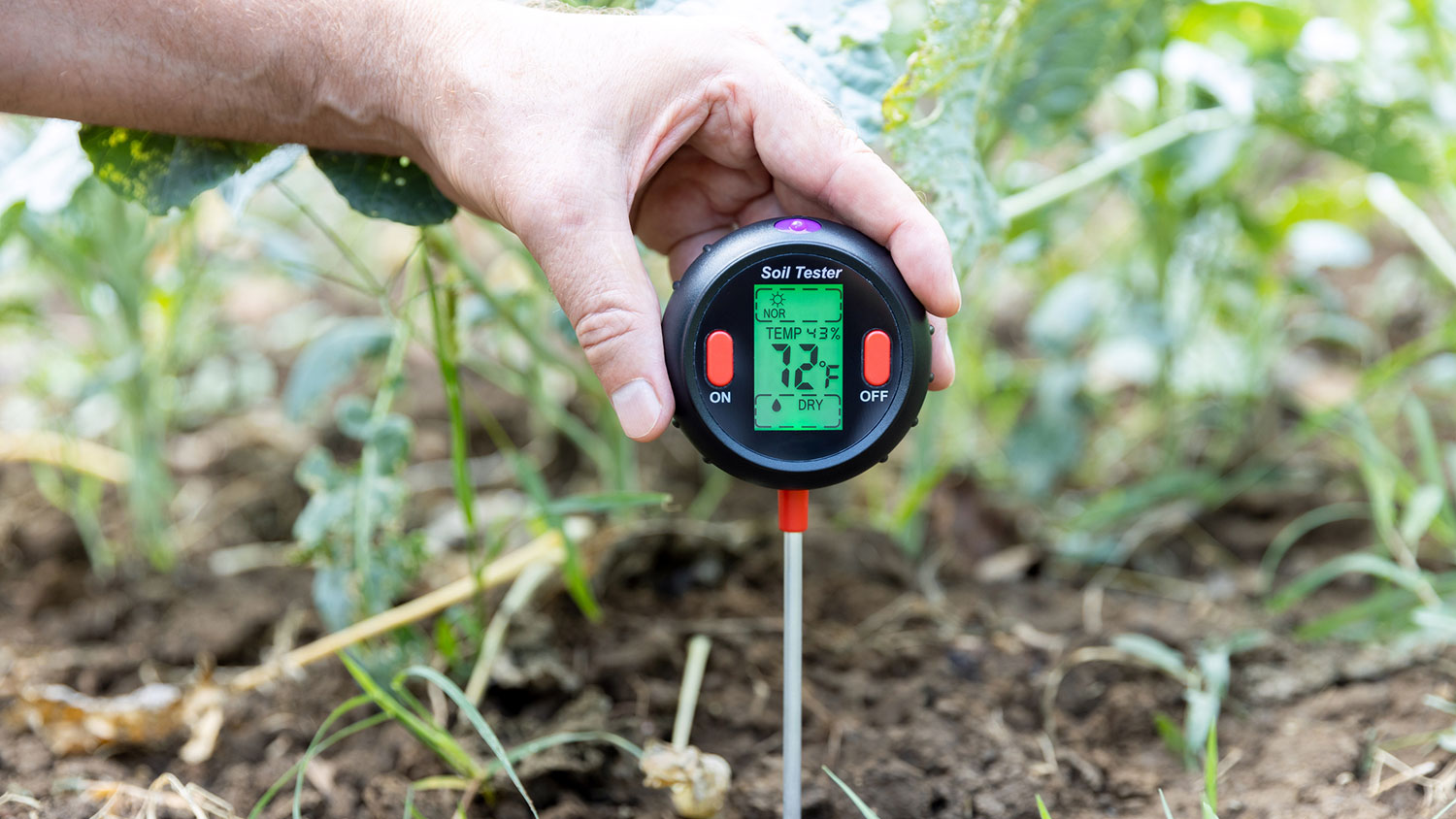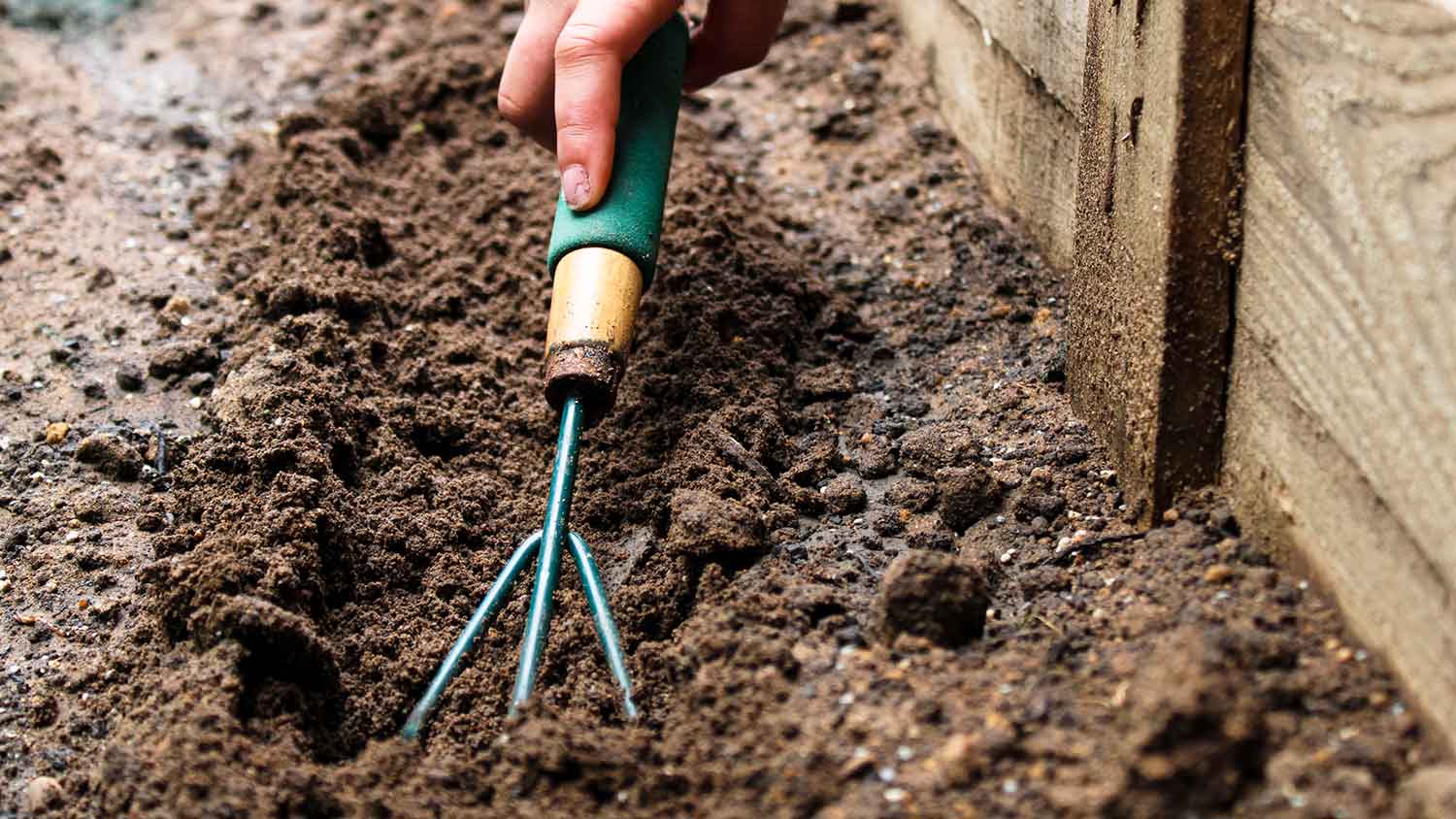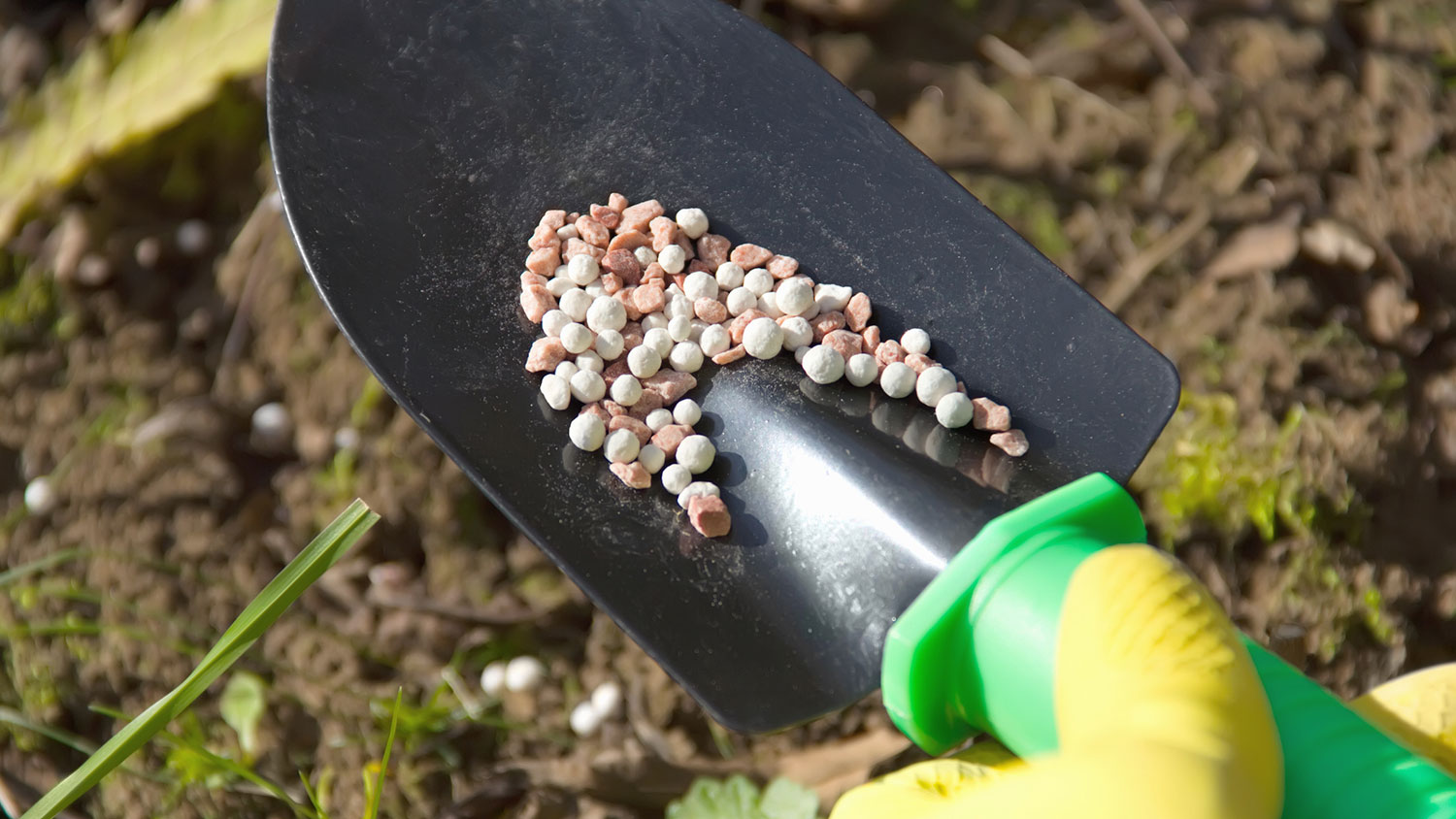How to Plant Tulip Bulbs for the Brightest and Healthiest Blooms
Plant these pretty perennials like a pro


Nothing says spring like bright, colorful tulip blooms. This plant is an easy grower, and though it’s technically considered a perennial, most gardeners treat them as annuals. When fall rolls around, it’s time to pop new bulbs in the ground. This complete guide will show you how to plant tulip bulbs.
What Are Tulip Bulbs?
Tulips are a flowering perennial technically classified as a bulbous herb. Though we typically don’t think of them as an essential part of an herb garden, some people do eat the petals if they’re not allergic. Avoid eating the bulbs, which have high concentrations of toxic alkaloid and glycoside compounds.
This practice originated in the Netherlands during the famine at the tail end of World War II. Before that, tulip bulbs were used as currency in Holland because of their soaring value.
In modern times, tulips are used as decorative plants and they’re very affordable. If you want to grow them at home, you’ll typically start with a bulb rather than a seed. This bulb is essentially an underground stem that has all the makings of an adult plant. It’s ready to grow as soon as the conditions are right.
How Much Does It Cost to Plant Tulip Bulbs?
The cost of professional landscaping is typically around $50 to $150 per hour, so the price depends on exactly what needs to be done. You may need to mulch your flower beds before planting or you may want someone to arrange your pots. If you do it on your own, tulip bulbs are inexpensive. You can purchase a bag of 50 bulbs for between $15 to $30.
When to Plant Tulip Bulbs

Tulips are typically planted in mid-to-late autumn or early winter before the first heavy freeze—but it depends on your USDA zone. Tulips need 2.5 to 3.5 months of temperatures below 50 degrees Fahrenheit in order to flower, and they won’t always grow roots if soil temperatures are above 60 degrees.
Most years, you’re looking at the following planting schedules:
Zones 1–3 should plant in September or October
Zones 4–5 should plant in late September–early November
Zones 6–7 should plant in October–mid-December
Zones 8–10 should chill their bulbs for 10–14 weeks in the refrigerator before planting them sometime between November–January
As a rule, plant your tulips after the first frost. This should be about six to eight weeks before you get the type of hard frost that freezes the ground solid. You’ll start to see growth in late winter or spring, but it depends on the type of tulip.
How to Plant Tulip Bulbs
Tulip bulbs are simple to grow. It’s all about the timing, but from there, the plant pretty much handles itself. Here’s how to plant tulip bulbs in the fall.
1. Test the Soil Temperature

Before you plant your tulips, test the soil temperature regularly. Avoid planting until the soil temperature is no longer rising above 60 degrees Fahrenheit. If you live in USDA zones 8 through 10, you have to take a bit of an alternative method.
Chill your bulbs in a refrigerator set at 35 to 45 degrees Fahrenheit for 10 to 14 weeks before planting in late fall and winter.
2. Choose Where to Plant Tulips
The best place to plant tulips depends on your USDA zone. In zones 6 and below, aim for a spot with morning sun and afternoon shade. In zones 7 through 10, choose an area with full-sun.
Since too much moisture is a killer for tulip bulbs, well-draining soil is a necessity. Ideally, soil should be dry or sandy and neutral to slightly acidic. If you’re planting your bulbs in a container, make sure there’s adequate drainage. Potted tulips are an excellent front porch decorating idea—just don’t waterlog the bulbs.
3. Prepare the Soil

Before you plant tulips, you’ll need to prepare the soil. Loosen soil with a garden fork or tiller to a depth of 12 to 15 inches. The soil should be fertile, so consider mixing in a 2- to 4-inch layer of compost.
4. Create a Hole for the Bulb
Tulip bulbs need to be planted fairly deep and with enough space for plants to breathe. Make holes:
6–8 inches deep
4–6 inches apart
The exception to the rule is if you’re planting your tulip bulbs in a garden bed of mulch. Research has shown that 2 inches is the prime depth to produce the lushest foliage. Just make sure that 2-inch covering remains throughout the plant’s lifespan.
5. Plant the Bulb

Place your bulb in the hole with the pointed end facing up, then cover it with soil.
6. Water the Bulbs
Immediately water your bulbs after planting. Bulbs don’t like excessive moisture, but they do need water to start the growing process. Give them a good soak.
7. Fertilize

If you didn’t add compost previously, use a balanced flower fertilizer. This technically isn’t necessary unless you want to grow your plants as true perennials. The bulb actually has nutrients to help the plants grow, but those nutrients do run out.
Taking Care of Tulip Bulbs
Once you’ve planted your bulbs, you need to focus on growing your tulips. It’s pretty similar to growing other types of fall flower bulbs, and simple enough that beginning gardeners have great luck. If you’re not familiar with the process, these steps will teach you how to grow tulips the right way.
1. Protect Your Bulbs Against Pests
If you have issues with pests, take steps to protect your bulbs. Mice and moles are a common problem that you can deter by putting a little kitty litter, crushed gravel, or thorny leaves (think: holly) in the hole before you plant. If that doesn’t do the trick, you may have to use wire cages around your bulbs.
2. Get Your Watering Schedule Right
Tulip bulbs are a set-it-and-forget-it type of plant. As long as it rains every week, you don’t need to water them. If there’s a dry spell, just make sure they get water weekly until the ground freezes. Always avoid watering your tulips unless you’re experiencing a drought. Wet soil can rot the bulbs.
3. Fertilize When Blooms Appear
When foliage appears, fertilize your tulips with the same type of fertilizer you used when you planted the bulbs. Make sure you give them a good watering to help the fertilizer absorb.
4. Deadhead Tulips, but Leave the Leaves
Tulips aren't the best perennial. They may not come back every year, and if they do, they’re typically not as vigorous as the year before. That being said, if you want to treat your tulips as perennials, snip the flowers off once the blooms have passed. Leave the foliage in place and allow it to die off on its own. This helps feed the bulb for the next season. Once the foliage loses its color, snip it away.
DIY vs. Hire a Pro
Most homeowners can handle planting tulip bulbs on their own, providing they have fertile soil with some sunlight. There are some cases where you might want to hire a professional. If your tulips are part of a larger landscaping project or a full garden of various blooms, consider calling a local landscaper or gardener near you. They’ll be able to choose plants that work well with the bulbs—both with the timing of the blooms and the soil conditions.
Additional Questions
Can you plant tulip bulbs in the spring?
You can plant tulip bulbs very early in spring, but there’s no guarantee they’ll all root and put out healthy blooms. It’s better to plant them during the winter if you missed the typical autumn window.
What is the best month to plant tulip bulbs?
It depends on your USDA plant hardiness zone. Generally, you should aim for:
September–October in zones 1–3
Late September–early November in zones 4–5
October–December in zones 6–7
November–January in zones 8–10
How do you prepare tulip bulbs for planting?
You don’t need to prepare tulip bulbs unless you live in a warmer climate. If you live in USDA zones 8 to 10, chill your bulbs for 10 to 14 weeks in a refrigerator set at 35 to 45 degrees Fahrenheit. Avoid putting your bulbs in a crisper alongside other vegetables. Instead, opt for a storage freezer without produce.
How many tulip bulbs do you plant in one hole?
Plant one tulip bulb per hole, and make sure your holes are 4 to 6 inches apart.





- Landscapers
- Tree Surgeons
- Gardening Services
- Landscape Architects
- Sod Installation
- Tennis Court Contractors
- Landscape Design
- Retaining Wall Companies
- Grading Companies
- Landscape Rock & Sand Delivery
- Mulch Delivery Services
- Pond Companies
- Artificial Grass Companies
- Shrub Removal & Trimming
- Backyard Design Companies
- Commercial Landscaping
- Koi Pond Services
- Backyard Landscapers
- Trampoline Assembly
- Hedge Trimming
- Pond Services
- Garden Design
- Outdoor Plant Watering
- Putting Greens
- French Drains
- Turf Installation
- Sod Removal Services
- Lawn Repair Services
- Brush Chipping Services
- Hardscape Contractor
- Landscape Rock Removal
- Shedding Light on the Best Types of Light Bulbs for Your Space
- Should You Use a Light Bulb Changing Service? DIY vs. Hiring a Pro
- How to Dispose of Light Bulbs and What to Do With Each Type
- 4 Common Types of Light Bulbs: A Complete Guide
- 10 Tips to Make Changing Light Bulbs Easier
- Incandescent vs. Fluorescent Light Bulbs: What’s Right for Your Home?
- 10 Reasons Your Light Bulbs Could Be Burning Out Too Soon
- How to Spruce Up Your Existing Garden by Adding New Plants
- How Many Watts Does a Light Bulb Use, and Why Does It Matter?
- The 8 Best Native Bulbs to Plant in the Midwest for Spring










